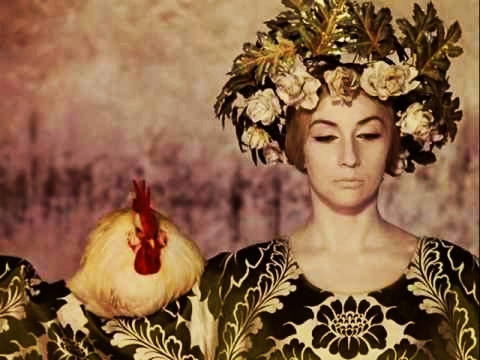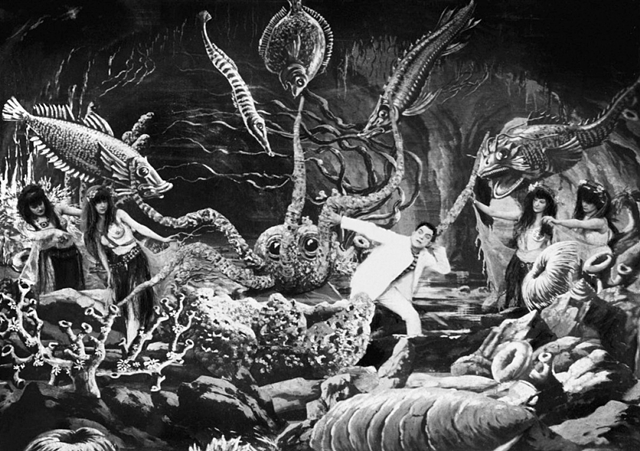Scene from ‘The Color Of Pomegranate’ 1968 (dir: Sergei Paradjanov)
Cinema has evolved considerably in the last 100 odd years. But what has remained essentially unchanged is its nature as a visual medium. Since its humble beginning cinema has been communicating to its audience through images. It’s true that the addition of sound has undoubtedly enhanced the medium and enriched the art form. The sonic aspect of cinema has become so indispensable, that it has become an integral part of the whole experience. And yet cinema has retained its early silent roots and remained primarily a visual art. Over the time, the film-goers became more accustomed to the complex visual expressions. The proficiency of the audience pushed the filmmakers to be more creative and articulate. As a result modern cinema has become increasingly eloquent and its audience, fluent in cinematic language.
The beauty of cinema lies in its expression. The majority of the films that are made are narratives, and quite possibly they will remain so till the end. But even in the narrative form, better films stand out because of their superior expression. It’s not the ‘story’ they are telling, it’s ‘how’ they are telling the story. A great story can be ruined if it’s told badly (Bicentennial Man, 1999) where as a simple story can become a great film if it uses the cinematic language to its fullest (Duel, 1971). The inherent difference between cinema and literature is that cinema poses a limitation on explicit verbal communication, especially when portraying a character’s internal world. However this particular limitation has become the strength of cinema, as it has given birth to the cinematic language, an exclusive expression which is at once poetic and unique. Image based communication relies on the interpretation of audience. It makes the experience more engaging and less prosaic. I would like to think that the essence of cinema is in its visual language.
Scene from ‘Under The Seas’ 1907 (dir: Georges Méliès)
Despite being a visually communicative medium cinema uses the conventions of oral and written language. It has a complex grammar of image-vocabulary, syntax and semantics, all of which have formed over the years. Because of this it is possible to translate a written script into cinematic expression. Whereas the script will communicate only to those readers who know the written language, the translated images will be legible to anybody who is accustomed to the non-verbal cinematic language, irrespective of the vernacular language they speak. Let us take an example:
Words:
‘A young lady waits at an empty station for her lover. She met him a few months back in San Francisco. The train arrives. She is ecstatic to see her man. She does not know he has other plans for her.’
There can be various ways to translate these five sentences on screen. But let us stick to basic imagery.
Visuals:
- A young woman sits alone on a bench in an empty station. She looks at her watch impatiently. The signal on the platform turns to green.
- Flashback: The woman is in the arms of a man, smiling, eating ice-cream. At the backdrop the Golden Gate Bridge can be seen.
- ( A sound of train brings us to present) A train arrives.
- The young woman spots her lover in one of the compartments, ready to get down. She runs towards him with a broad smile.
- The man brings out something from his bag. Close Up: It is an automatic handgun. He puts it in the inner pocket of his suit. Only then he descends the train with a wide smile and approaches the young woman.
It is safe to say, that this sequential imagery would be comprehensible to almost anyone at anywhere in the world. This simple example demonstrates the universal nature of cinematic language. And yet cinema is not a true language system. All languages by definition are a system of signs used for intercommunication. But cinema is actually a one way communication system. The image based syntax of cinema is a strange mix of a lexicon and a morphology, which does not exist in any spoken or written language. The ambiguity of the visual language may allude a part of its audience to a poetic expression, leaving the rest eluded from its apparent beauty. And that is what, readers, makes cinema special.


